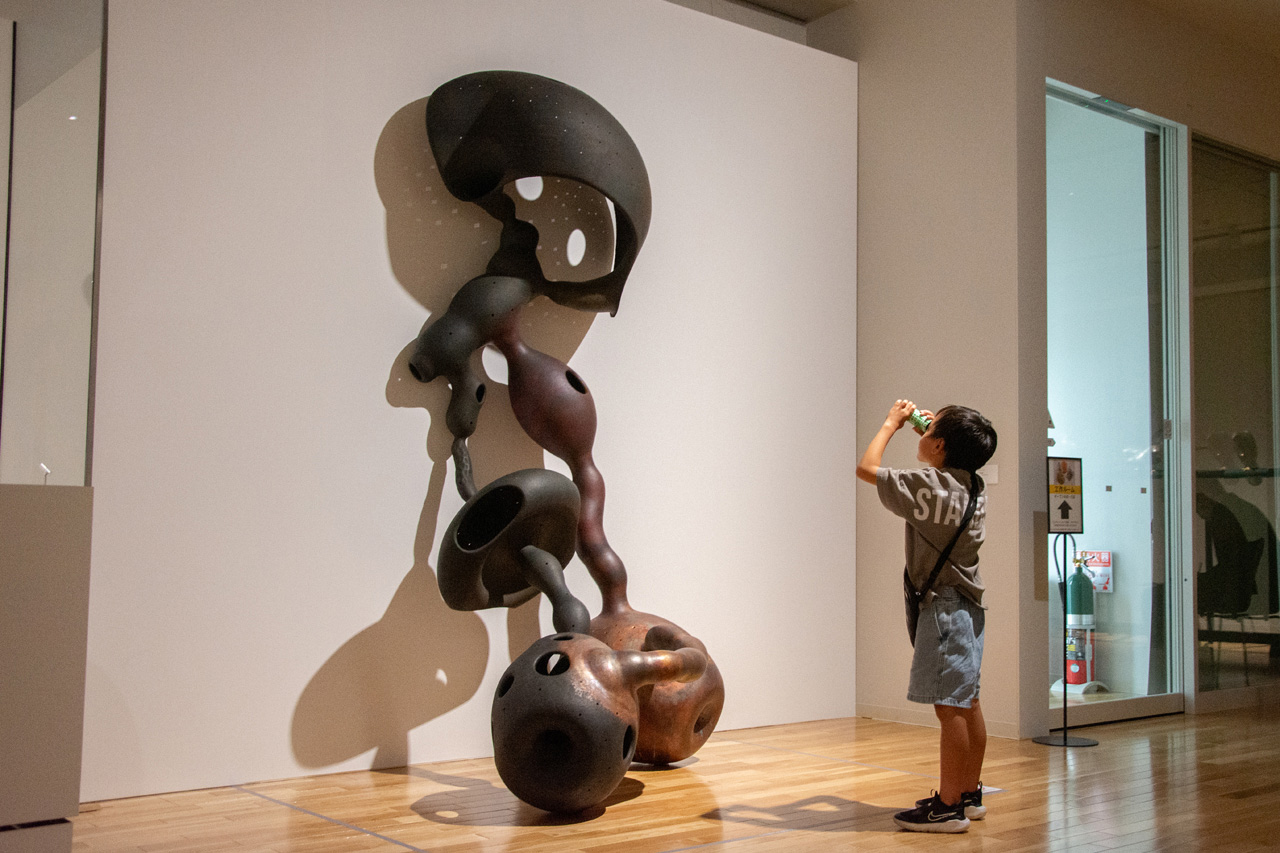Reports
April 11, 2025
2024 Event Report: Tanken! Children’s Craft Museum: The Secret of Light and Shadow
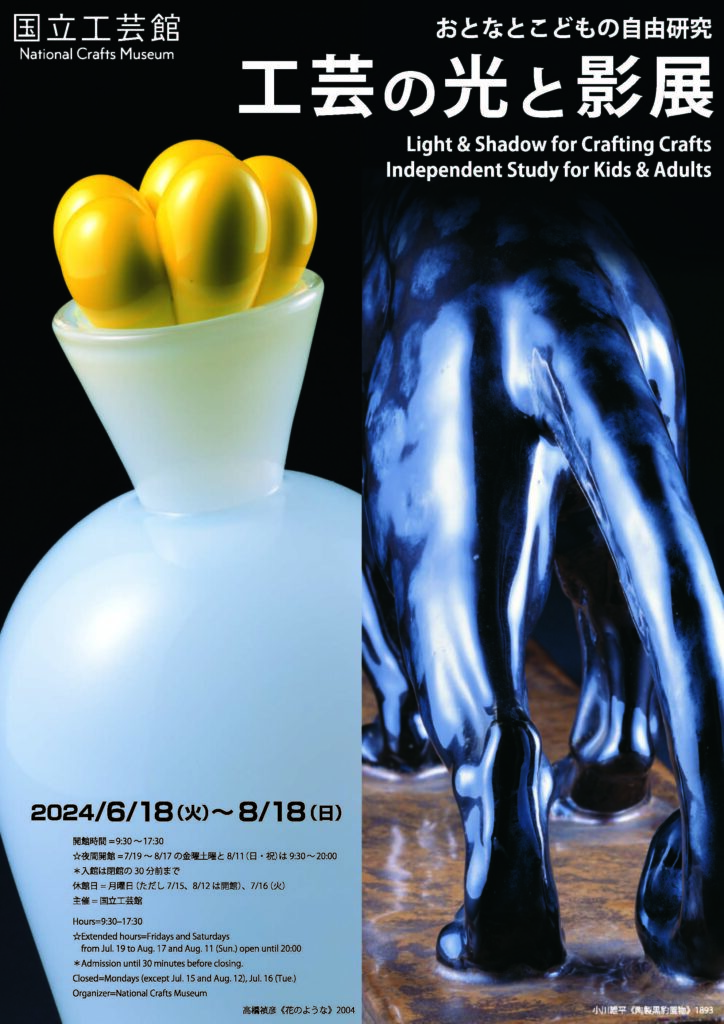 EndedFree admission for children under 18
EndedFree admission for children under 18 
Light & Shadow for Crafting Crafts: Independent Study for Kids & Adults
National Crafts Museum
Dates June 18, 2024-August 18, 2024
- Sculptures and 3D artworks
- Workshop
- Crafts
- Design
- Tradition
- Living national treasure
- Objets d’art
Index
The National Crafts Museum, which specializes in presenting the art of crafts and design, hosts special events for kids and their parents to enjoy together during its summer exhibitions. The theme for 2024 is “Light and Shadow.” Through approximately 130 works, the exhibition showcases various expressions of light and shadow created with multiple materials and techniques: the natural luminosity of materials like glass and metal, brightness created through contrast with jet-black surfaces, and lighting designs familiar in our daily lives.
An event during the exhibition period was “Tanken! Children’s Craft Museum: The Secret of Light and Shadow,” which invited visitors to view the experience of appreciating artworks as an “exploration” (tanken in Japanese) while discovering pieces in the galleries. Over three days (July 15, 21, and August 17), a total of 214 people participated in this event, which included workbooks, self-guided materials, and craft workshops. Not only children but adults, too, became “explorers,” enjoying the exhibition alongside their little ones.
Into the World of Light and Shadow

The National Crafts Museum is located in Honda-no-Mori Park, surrounded by lush trees in the heart of Kanazawa City. The exhibition “Light & Shadow for Crafting Crafts: Independent Study for Kids & Adults” opened on June 18, 2024, exhibiting craft and design works from the museum’s collection. (Exhibition period: through August 18)
At the entrance, visitors are greeted by a towering black sculpture so tall that even adults need to look up. Created using the traditional craft techniques of kanshitsu (a technique for making objects from many layers of hemp cloth soaked with lacquer) and kyushitsu (the art of applying lacquer), its glossy black surface—truly living up to the word “jet-black”—invites visitors into the world of “light and shadow.”
Visitors can discover various works throughout the galleries, including animals and dolls crafted in ceramics and metal, vibrant colored glass, and decorative boxes with delicate patterns. The exhibition encompasses a wide range of periods and genres, from 100-year-old masterpieces to contemporary works.
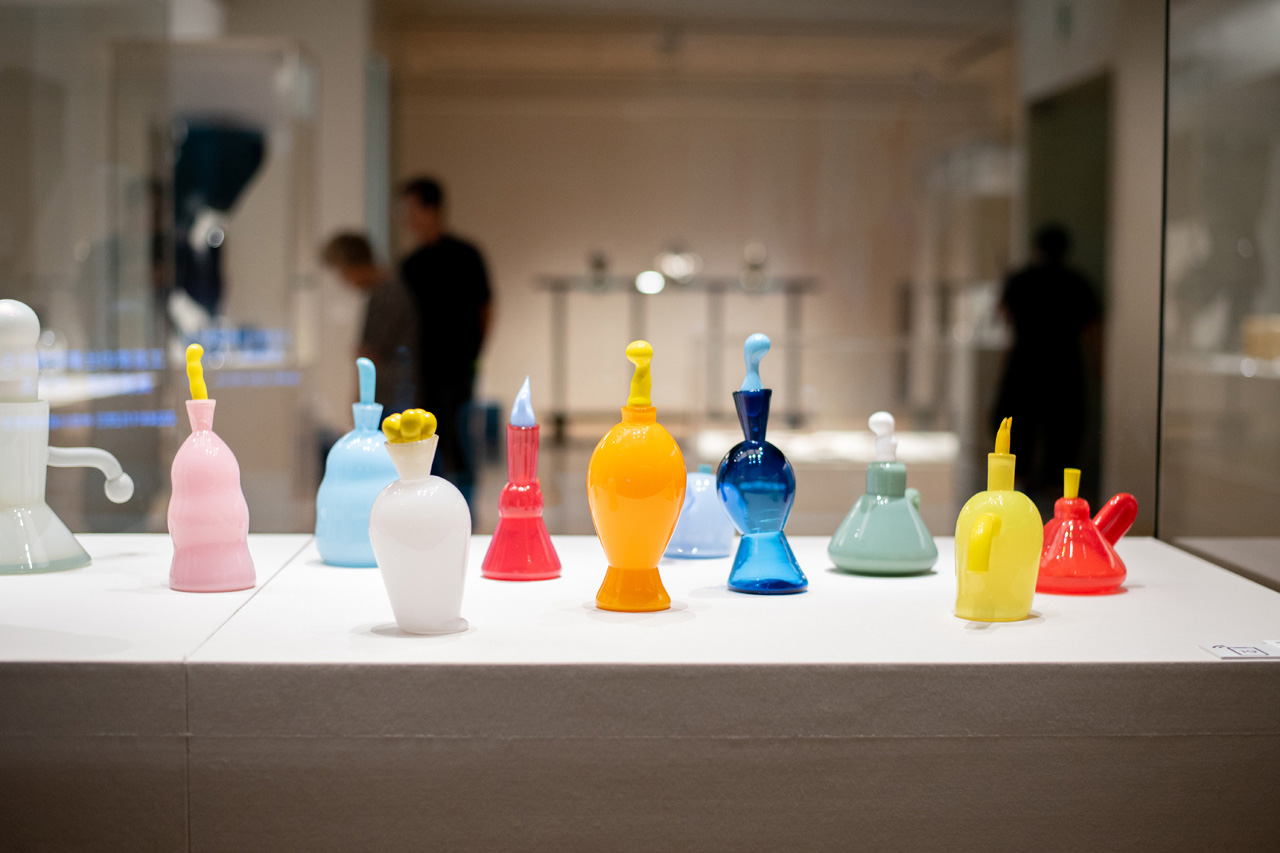
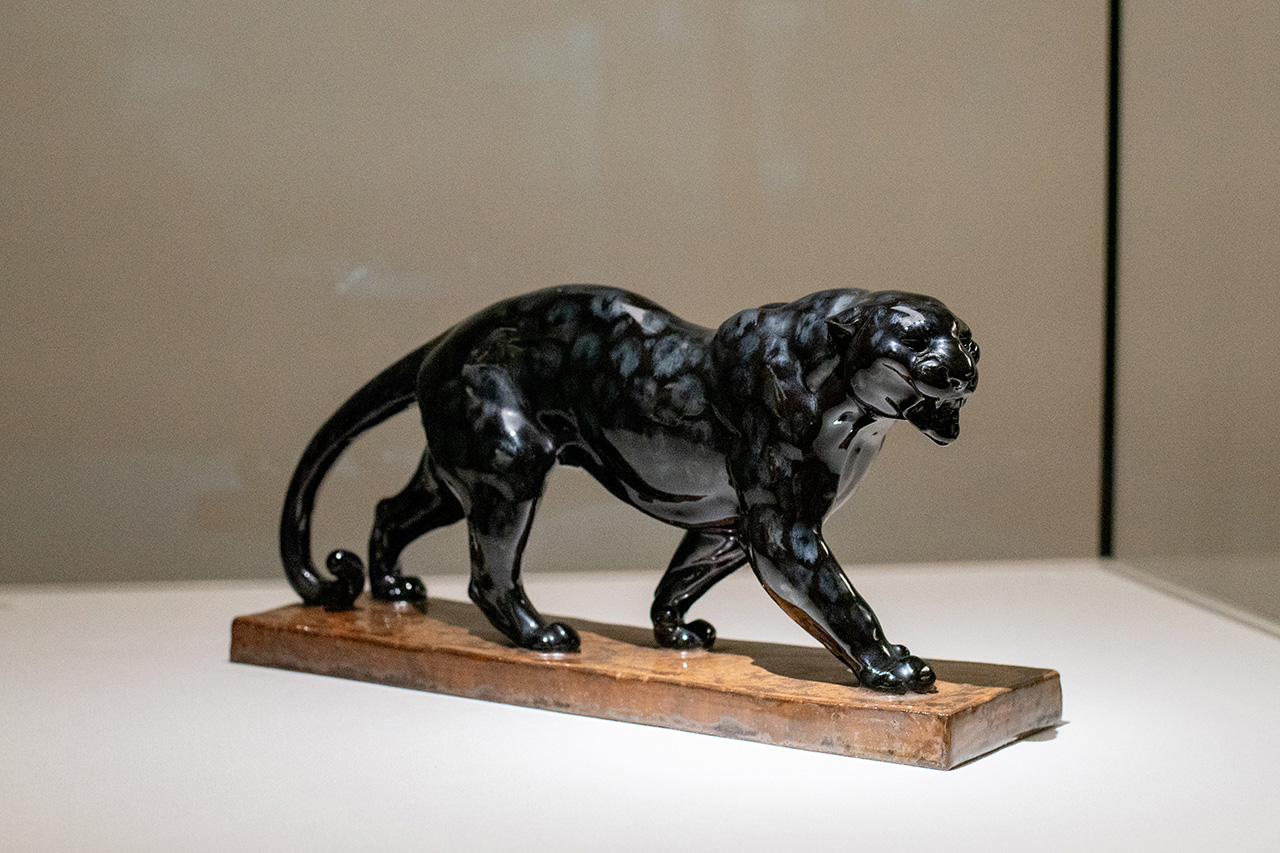
Visitors to the exhibition receive free self-guided materials to enhance their appreciation. There are two types: the “Explorer’s Map” for junior high school students and younger and the “Adult Independent Study Notes” for high school students and above. Both introduce the highlights of six selected works from the exhibition using easy-to-understand language.
When observing craft works, people sometimes get caught up in identifying the shape of objects like tea bowls or kimonos. This can lead to uncertainty about what to look at or the feeling that they need special knowledge to enjoy the pieces.
That’s why the self-guided materials feature boldly cropped photos of details, guiding viewers’ attention to the subtle expressions within each work. The children’s “Explorer’s Map” includes some life-size or larger photos, powerfully conveying details that might be hard to see with the naked eye.
This “Explorer’s Map” is folded accordion-style in B5 size, and when opened, it resembles an actual map. It’s a versatile tool for enjoying the exhibition—visitors can either follow the arrows through the galleries or hunt for artworks using the photos and descriptions as clues, choosing their own adventure style of exploration.
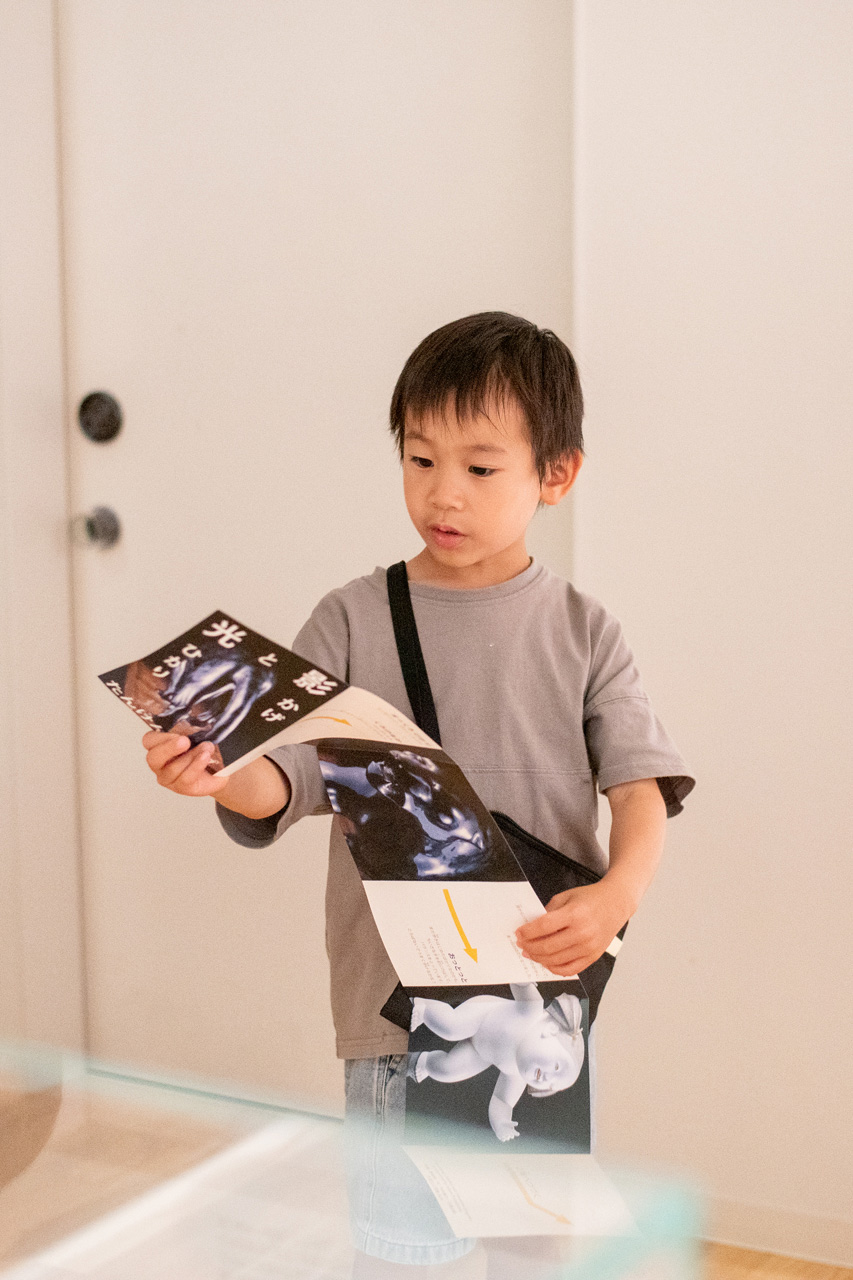
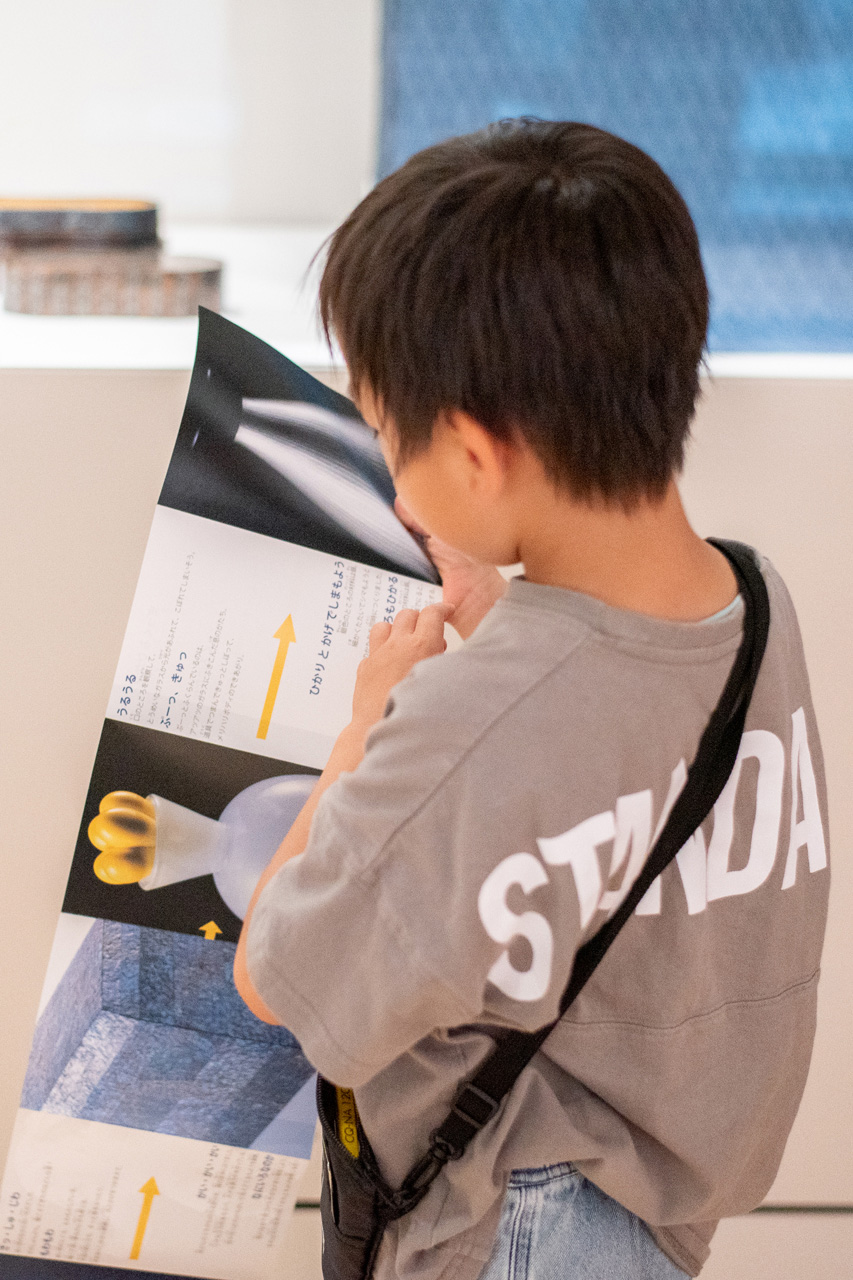
With a Workbook, Everyone Becomes an Explorer
“What’s exploring?”
This innocent question came from a boy about three years old at the entrance to the exhibition hall. An older girl beside him quickly grabbed his hand, said, “Don’t worry, it’s not scary!” and led him into the slightly dim room.
Both children and adults get to be explorers! “Tanken! Children’s Craft Museum: The Secret of Light and Shadow,” an event held in conjunction with the exhibition, is packed with unique ways to enjoy the exhibition from a fresh perspective.
Participants first receive an “Explorer’s Kit” shoulder bag at the ticket counter. Inside, they find everything needed for exploration: the self-guided materials mentioned earlier, a stamp card, colored pencils, and a “Wonder Scope“—a monocular-style tool for examining artworks up close.
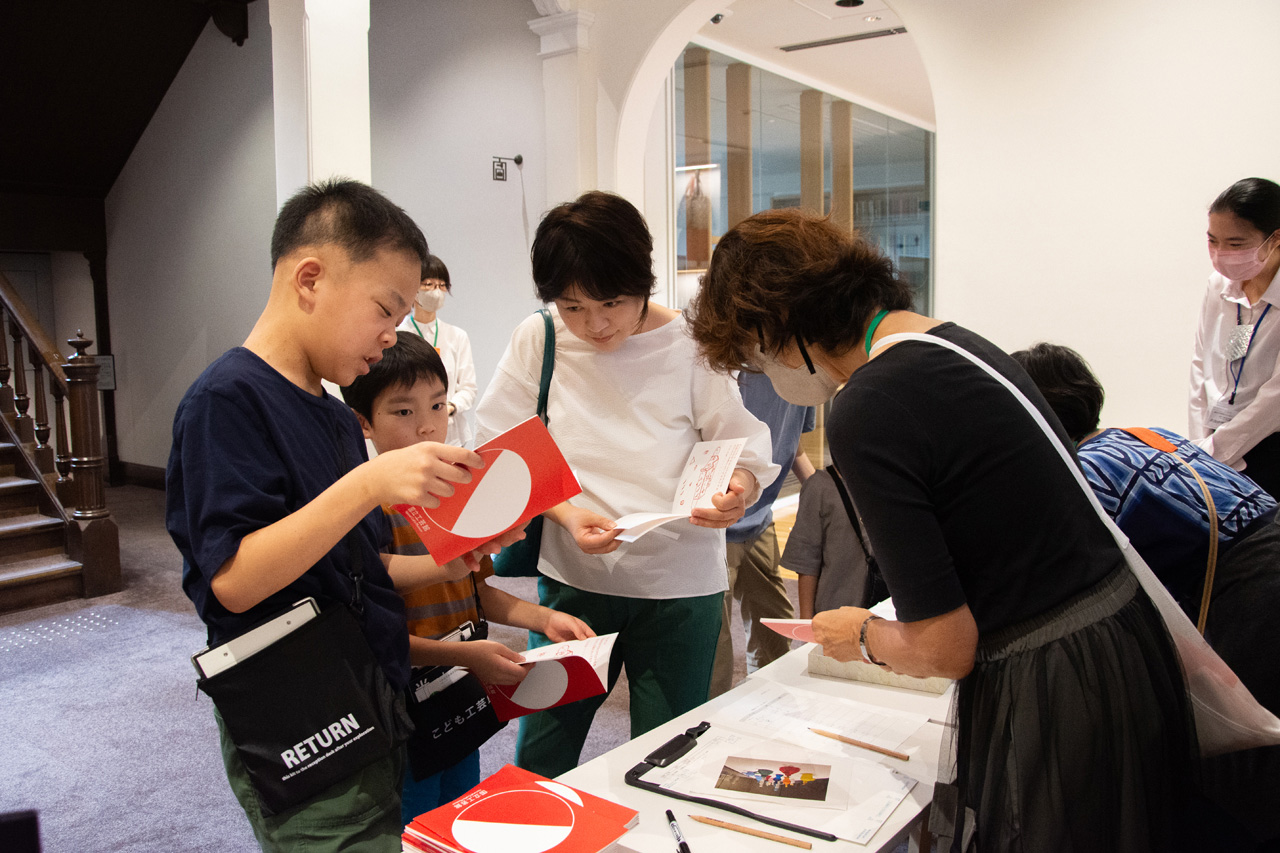
Another essential item is the “Explorer’s Notebook.” This A5-sized workbook is filled with various missions.
First, explorers write down their names and ages, then record the titles and features of artworks that catch their eye, followed by pages where they can sketch what they see.
When children first enter the gallery, their parents or guardians often start by asking, “I wonder what this is?” or “Look, there’s something over there!” But once the children find artwork that speaks to them, they stop in their tracks and eagerly begin writing and drawing in their workbooks.
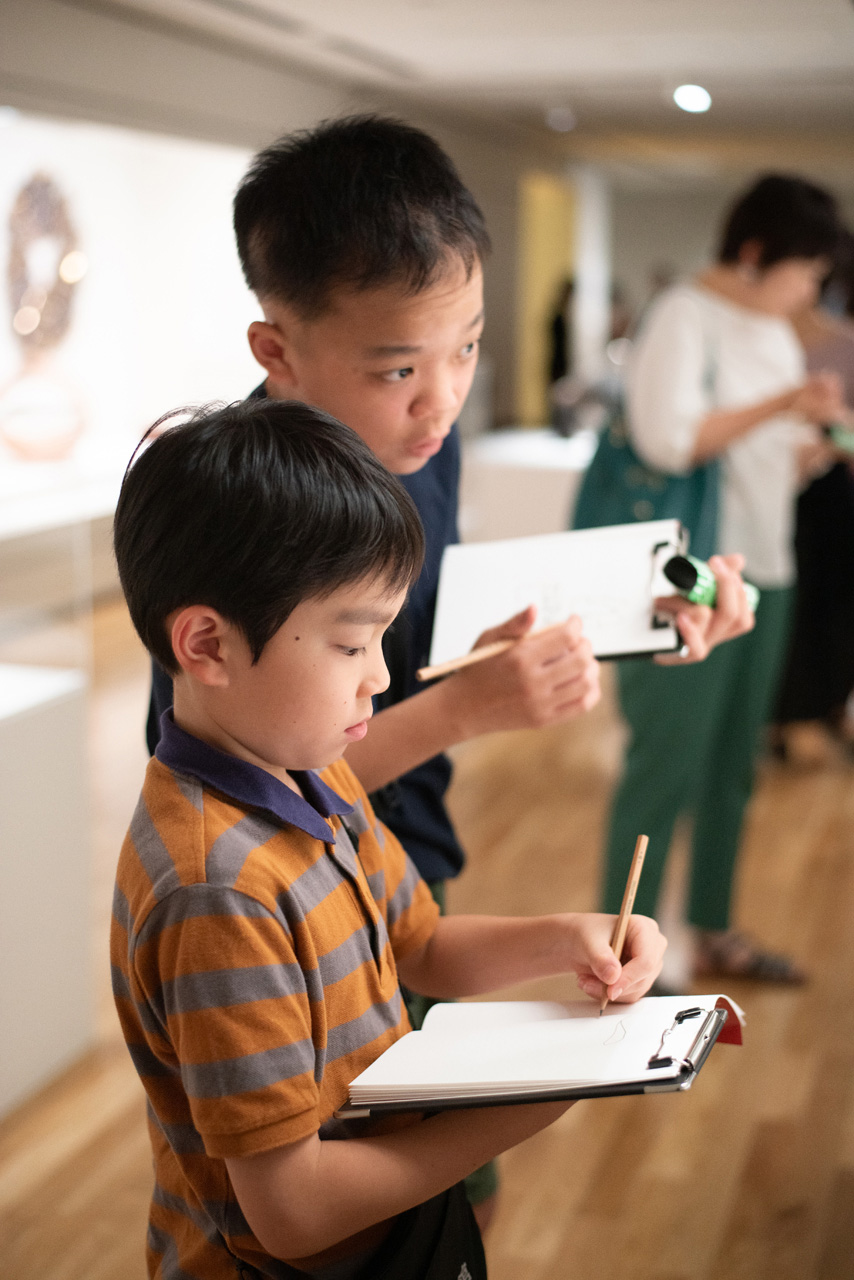
The “Explorer’s Notebook” isn’t just for kids—each adult gets one, too, and everyone tackles the same missions together.
As children become absorbed in their sketching, adults also begin searching the gallery for pieces they want to draw. One dad even came back alone to look at artworks he had rushed past earlier while with his child.
Usually, when visiting exhibitions with children, adults tend to prioritize their kids’ interests and naturally fall into the role of “chaperone.” But in this event, through the shared role of explorers and common missions, parents and children discover a new way to enjoy artwork together.
At the reception desk, some adults received their workbooks with shy comments like “Oh my, this feels like summer homework!” But once in the gallery, they filled page after page with sketches.
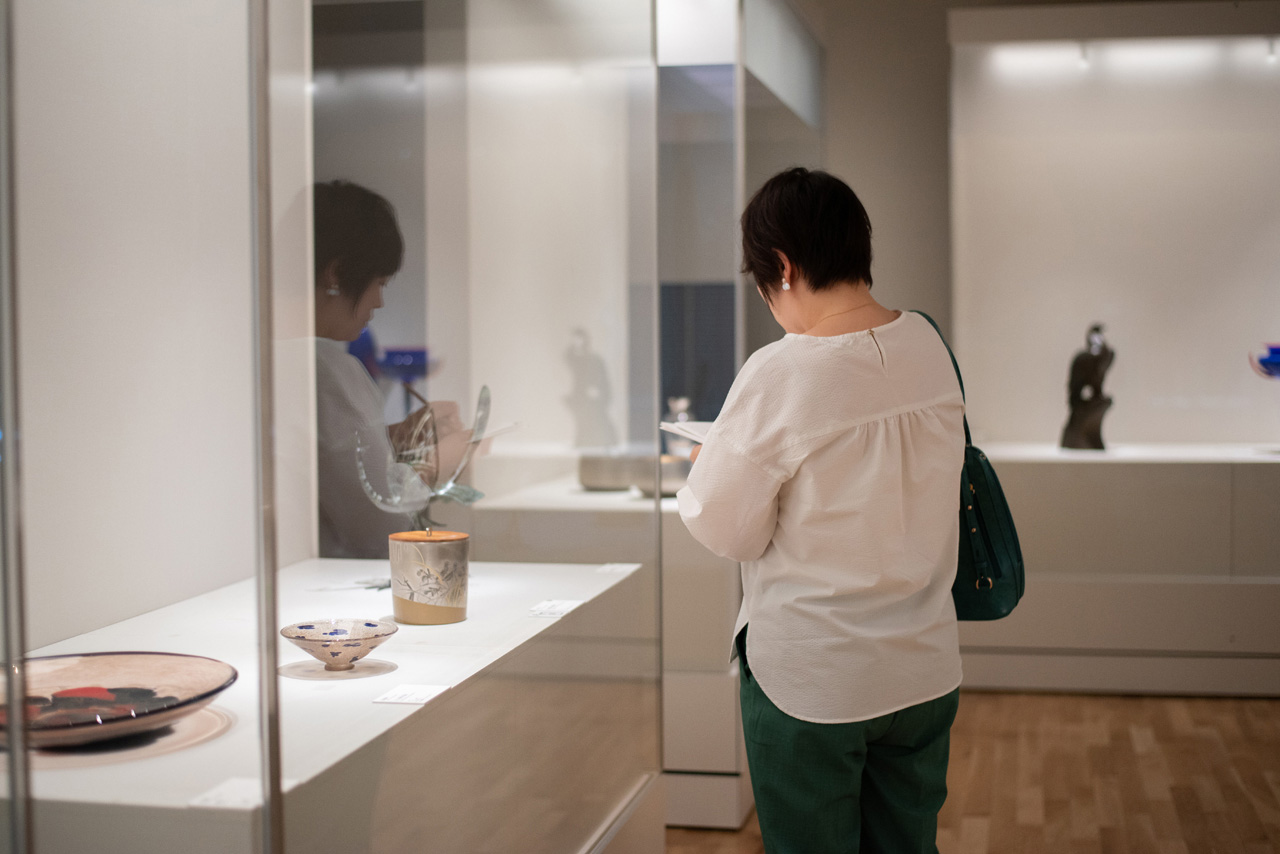
“At first glance, I thought it was just a floral pattern, but looking closely, I noticed several circles within it. When you’re drawing, you notice things you might usually miss,” shared a parent who came with their elementary school daughter. She was sketching Matsuda Gonroku’s “Ornamental box, yusoku pattern, maki-e and raden inlay, 1960.” Sometimes, drawing a seemingly complex pattern helps us understand how it’s actually constructed.
Some people capture the overall shape while others focus on extracting patterns—everyone has their own way of seeing the same artwork.
Everyone takes their time with the pieces that interest them, occasionally sharing their workbooks with each other. And so they progress through the gallery, repeating this process.
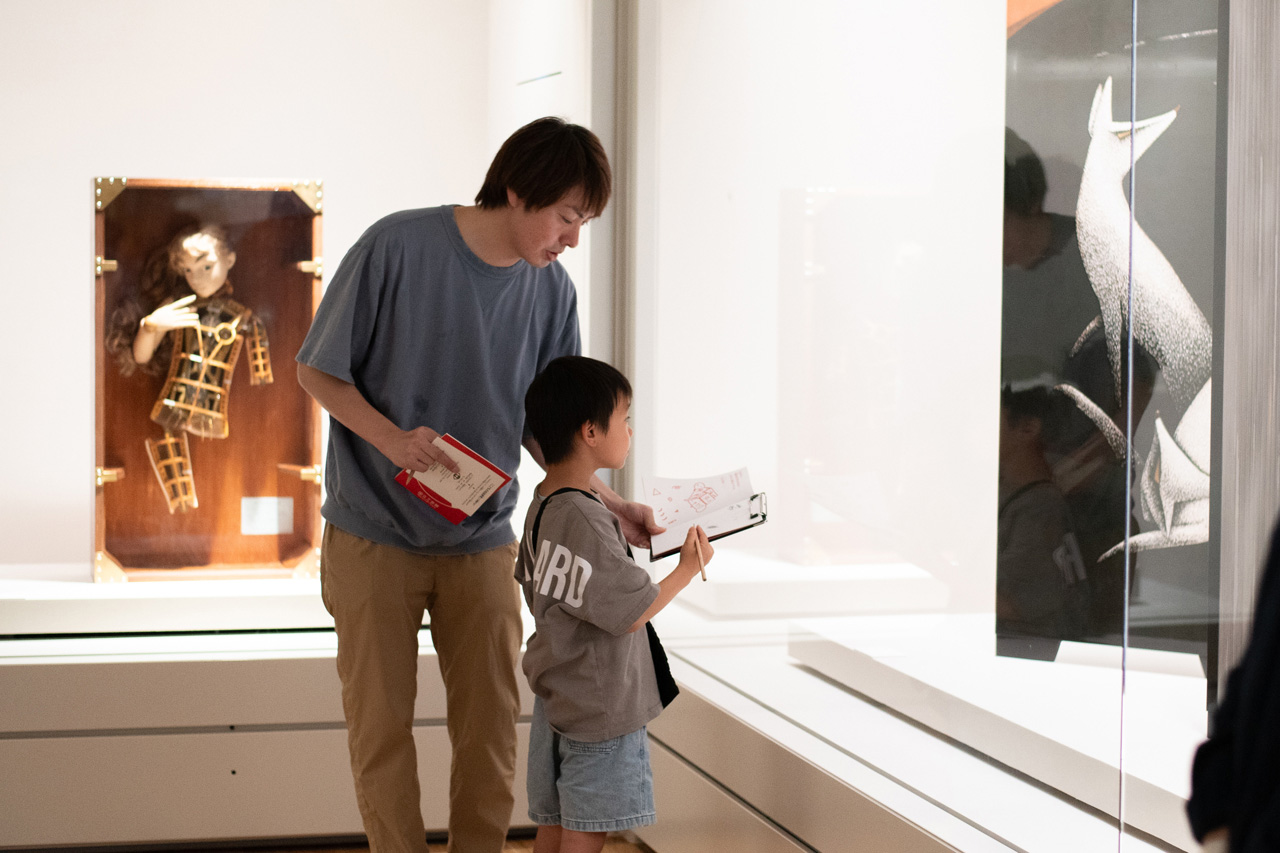
Capturing Memories in a Badge
After exploring the exhibition rooms, it’s craft time! Participants create their own patterned badges, incorporating inspirations from the artworks they’ve just seen.
The material is a soft metal sheet. By tracing designs on the back with a pen, you can create patterns that resemble metalwork.
Some children meticulously copy patterns they collected from the exhibition, while others freely enjoy the sensation of creating raised lines in the material. Everyone becomes absorbed in this experience, which is quite different from drawing with pencil and paper.
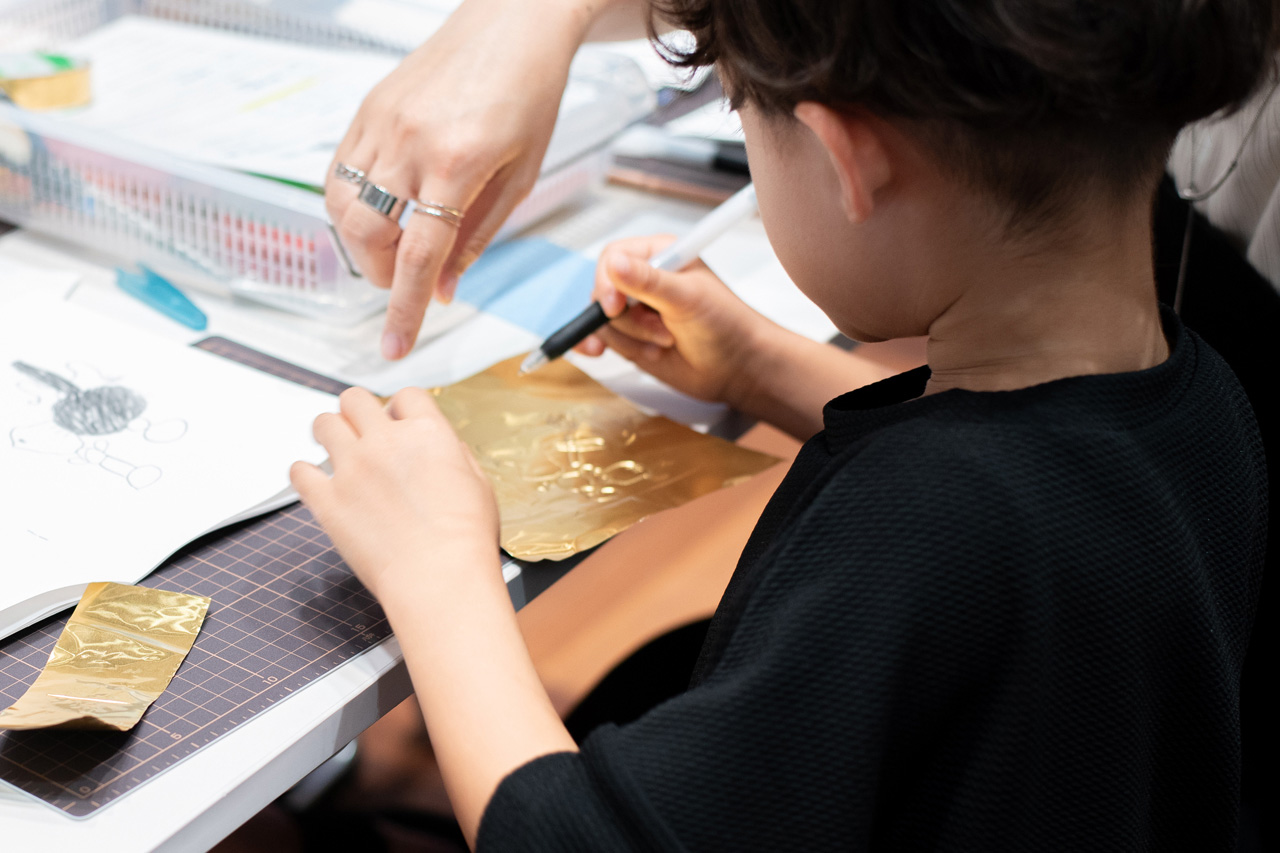

The badge is about the size of a child’s palm. Participants combine three or four of their favorite artworks or patterns into their designs.
Some people added playful touches to what they saw in the exhibition—like drawing a turtle inside the hexagonal pattern outline.
Unlike taking photos or making notes about individual pieces, creating a badge involves combining and reorganizing one’s favorite artworks and patterns. It transforms memories of time spent with family and friends at the exhibition into a special souvenir to take home.
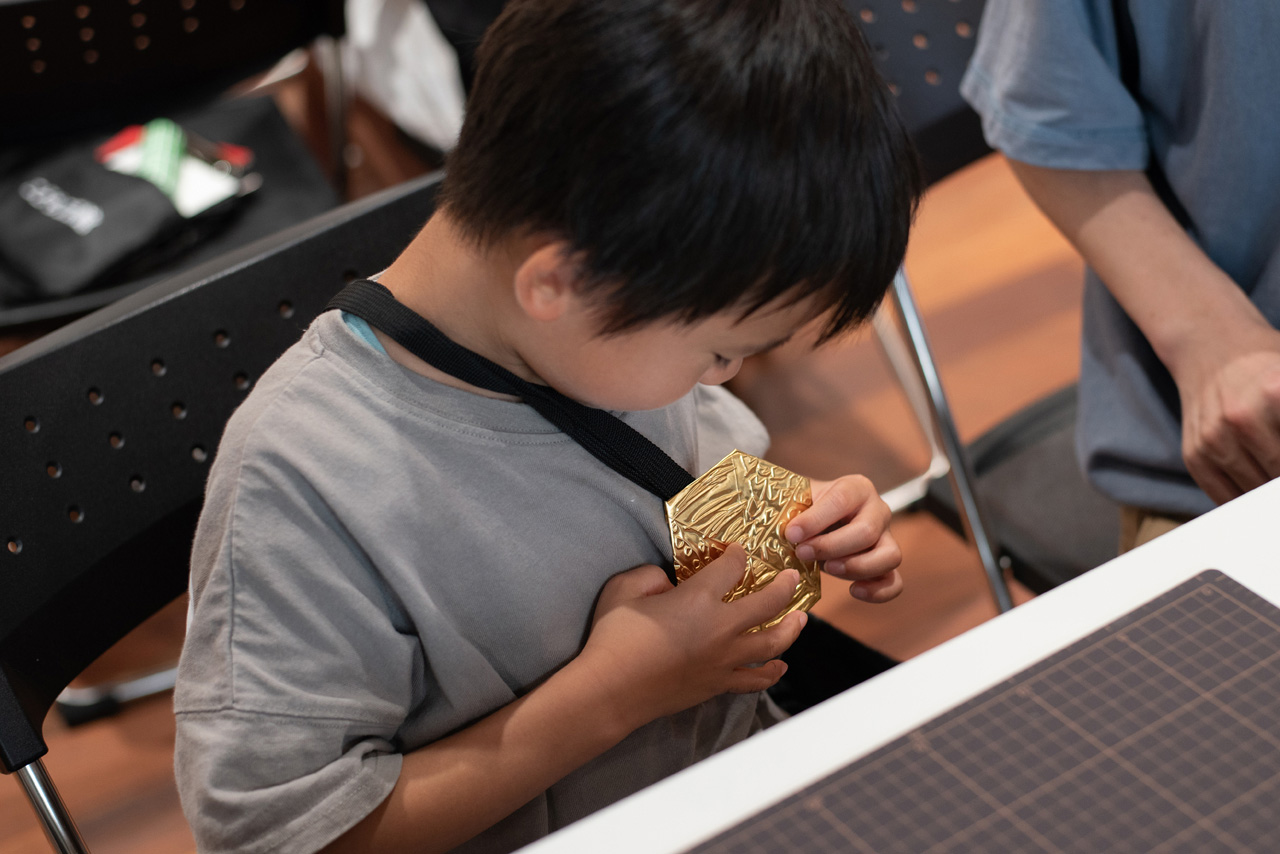
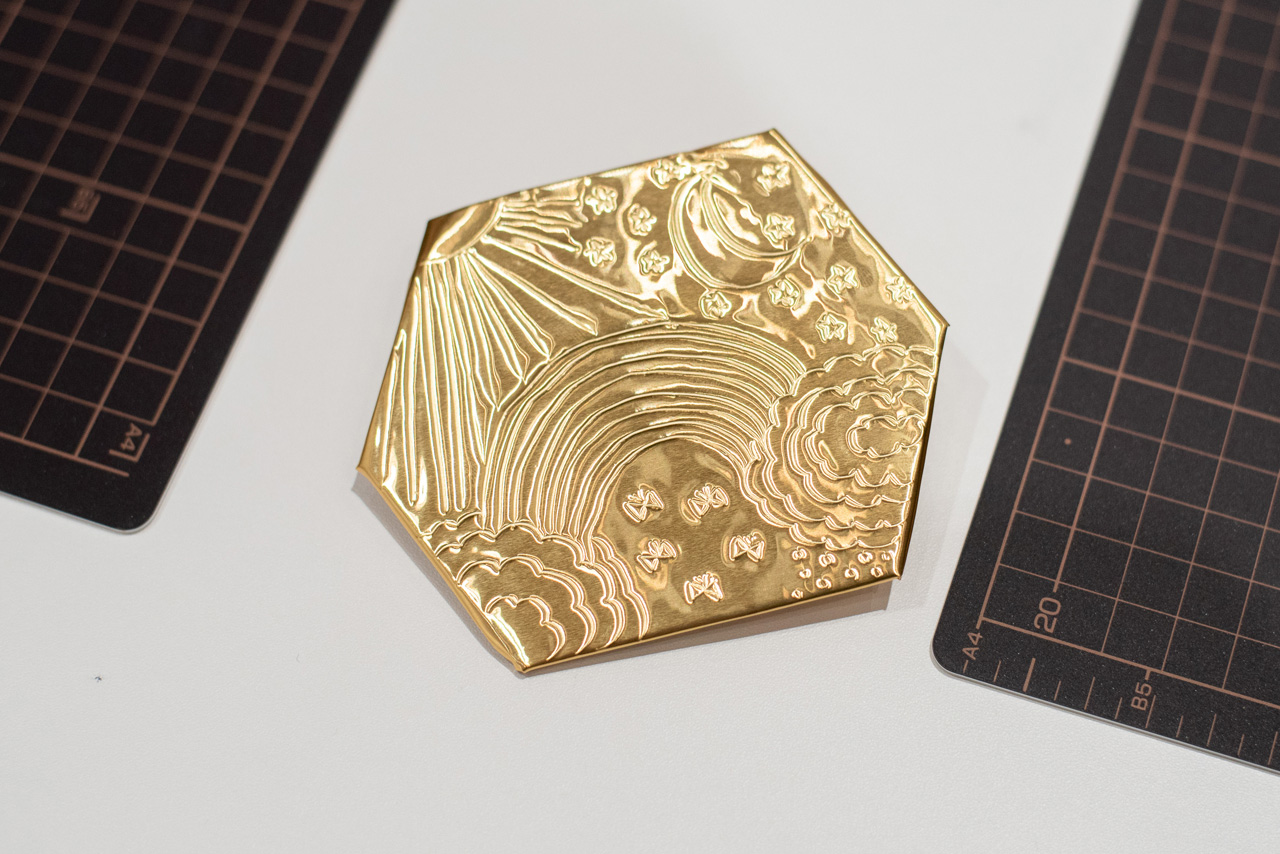
Seeing Crafts Through Children’s Eyes
“Parents often tell us they’re surprised that their usually restless children spend such a long time concentrating on drawing at the museum. While their children are absorbed in their work, adults get a chance to look at their own favorite pieces. When they return, they’re amazed by how well their children have drawn—discovering growth they hadn’t noticed before,” says Ms. Imai, Senior Researcher at the National Crafts Museum who planned this exhibition.
The museum continues efforts to nurture children’s sensibilities through programs encouraging active participation. These include activities that urge engaging with the crafts not just through sight but also touch, hearing, words, and sometimes even smell and taste, often set up like treasure hunts.
Children’s drawings honestly reflect their impressions of the artworks. Surprisingly, they often capture craft-specific technical expressions, such as techniques and material characteristics that nobody taught them about.
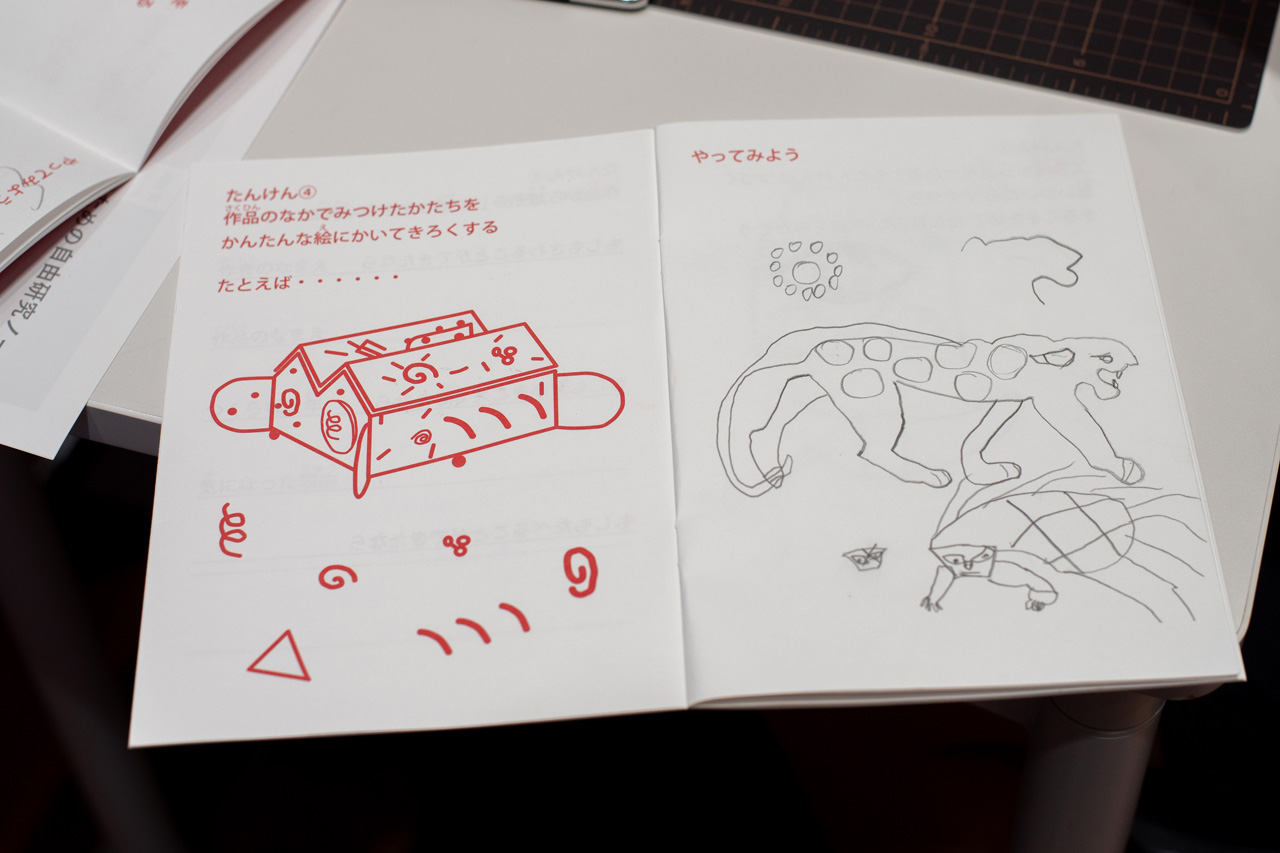
For metal works shaped by hammering, children might use forceful pencil strokes. For delicate patterns on eggshells, they might draw countless lines representing cracks. What might look like randomly drawn spirals could actually represent colors swirling together in glass. It’s easy to underestimate children, yet sometimes, adults can learn about the true essence of artworks from children’s perspectives.
When the National Crafts Museum first started children’s programs, it chose themes that felt approachable to children, such as animals or toys. Now, it deliberately curates artworks using the same standards as adult exhibitions.
You might think, “Crafts seem rather sophisticated—aren’t they difficult even for adults?”
But perhaps it’s precisely these seemingly challenging works that we can enjoy more flexibly by borrowing children’s fresh perspectives.
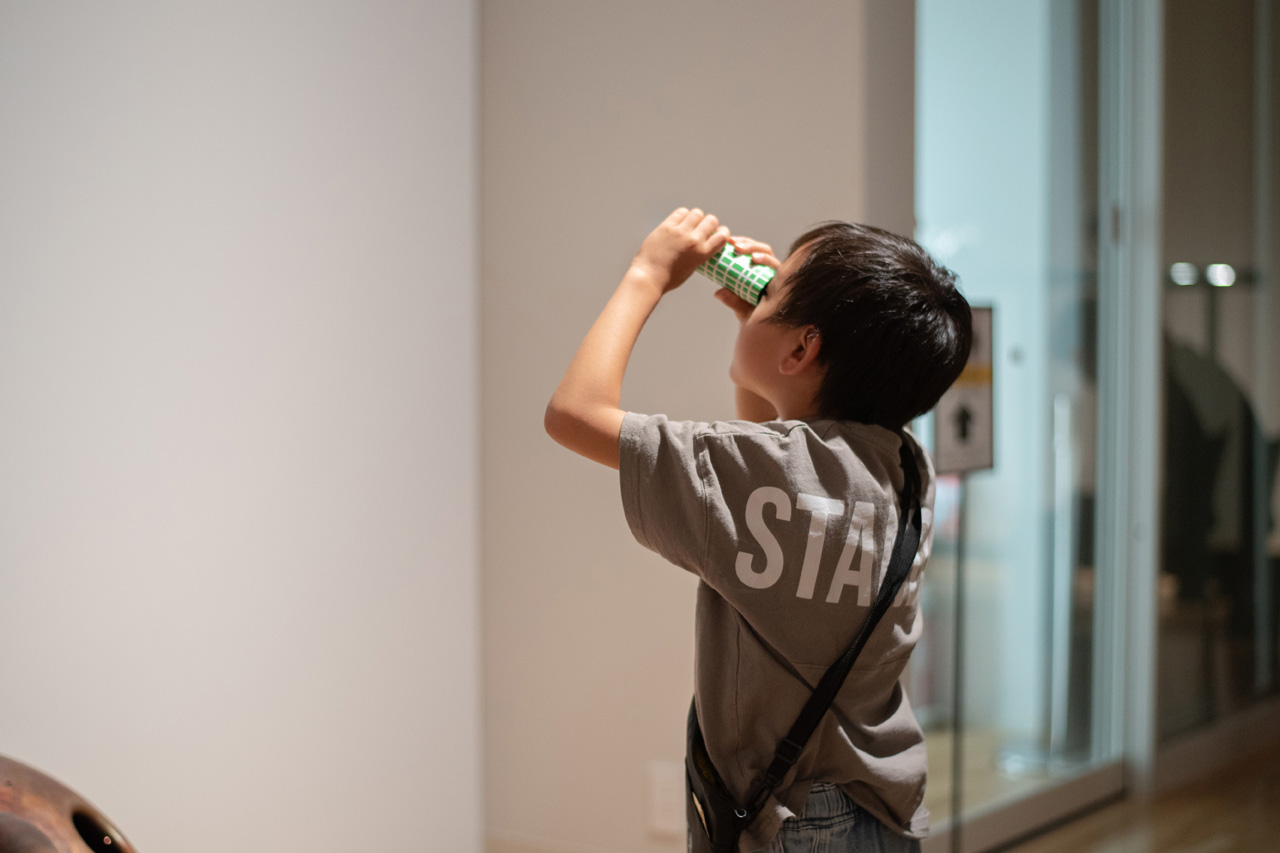
Dates of interview: July 21 and August 17, 2024
Editing: Yukako Takahashi
Photo: haruharehinata
